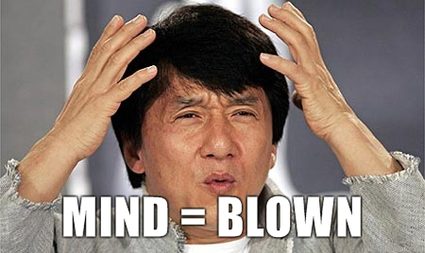Power Set Calculator
Welcome to Omni's power set calculator, where we'll deal with sets and their subsets (check: what is a subset?). In essence, the power set of a set is the collection of all its improper and proper subsets. Setting up a list of them all may be time-consuming in itself, but counting them (i.e., determining the cardinality of a power set) is very simple. But before we set off on the journey, we'll start small: with the power set definition in math and subset notation.
And if you think you've had just about enough of the word "set," then better strap in because there's more to come until the count is settled.
Sets and subsets: notation and definition
Let's look at the formal math set definition.
💡 A set is a collection of distinct elements.
You probably expected something longer and more complicated, didn't you?
In fact, the set definition in math is just that. Observe that its simplicity is a sign of how general the concept is. In particular:
- Sets can contain anything: decimals, functions, sequences, pizzas, etc.; and
- They can have any number of elements: two, a thousand, infinitely many, or zero.
We say that a set that contains some elements of another set (and none others) is the latter's subset. Usually, we denote sets with capital letters: A, B, X, and use symbols ⊂ or ⊆ for subset notation. To be precise, A ⊂ B or A ⊆ B means "A is a subset of B." Formally, the latter subset notation allows A = B. At the same time, the prior doesn't, but schools or even scientists abuse the notation and say they are the same thing. If you really want to stress that A ⊂ B but the sets are not equal, you can use A ⊊ B.
As the above subset notation suggests, A can contain all the elements of B (i.e., be the same as B) and still be called a subset. In fact, every non-empty B has two so-called improper subsets: the empty set (denoted ∅) and B itself. All others (i.e., those containing at least one element of B but not all) are called proper subsets. The power set of a set doesn't discriminate: it likes both types.
What is a power set? Definition
We begin with the formal power set definition.
💡 The power set of a set B is the set of all its subsets A ⊆ B. We denote it by 2ᴮ.
Just like in the above section, the definition is short. Let's have its properties neatly listed:
- The power set is unique. In other words, even though sets can contain anything, a specific one has only one uniquely determined power set.
- It is a set of sets.
- It contains both improper and proper subsets.
- The power set of the empty set
∅is{∅}, i.e., the set whose only element is an empty set. In particular,{∅}is not empty. - The cardinality of the power set (i.e., the number of its elements) is strictly larger than that of the underlying set.
Allow us to say a few more words about point 5. As mentioned in 4., it certainly works for empty sets (1 is larger than 0). Furthermore, it works for sets with one element: the power set then contains the empty set ∅ and the full (i.e., 1-element) set. And if we think a bit, it also works for other finite sets: after all, there are as many 1-element subsets as elements of the underlying one. But what about infinite ones? How many subsets does an infinite set have?
Obviously, infinitely many. However, we stressed that the cardinality of a power set is strictly larger, i.e., not equal, but larger. So, how can one infinity be larger than another? It turns out it can. The "smallest" infinity is equal to the number of positive integers. Or any integers. Or rationals. Yup, you read that right: each of these sets has the same number of elements.
However, there are more real numbers than there are rational ones. That infinity is different. And based on point 5 above, we can always take the powers set of real numbers and get something larger. And we can take the power set of the result. And again. And again, always getting something strictly larger.

If you'd like to learn more, make sure to read about .
Now, it's time to go back to finite sets and how to calculate their cardinality.
The cardinality of a power set
Before we give the formula, let's try to understand it.
Suppose we have a set B = {b₁, b₂, b₃, ..., bn}. How does its subset A ⊆ B look? Well, let's take the elements one by one.
Subset A either contains b₁, or it doesn't: we have 2 possibilities. It either contains b₂, or it doesn't: 2 options. It either contains b₃, or it doesn't: again, 2 possibilities. And it goes on until bn: it either contains it, or it doesn't.
Using the fundamental counting principle calculator, we can compute the number of subsets (and, as such, the cardinality of the power set) by multiplying the number of possibilities we had at each step. By the above, it is 2 for each of the n choices, so:
2 × 2 × 2 × ... × 2 = 2ⁿ.
To be precise, if |B| denotes the number of elements in B, then for |B| = n, we have:
|2ᴮ| = 2ⁿ
Now the notation makes sense, doesn't it?
Number of k-element subsets
Obviously, the elements of the power set have different cardinalities. It may happen that you're most interested in those with a fixed number of elements, for instance, only the k-element subsets of an n-element set. Observe that their number is given by the number of combinations without repetition.
C(n,k) = n! / [k! × (n-k)!],
where the exclamation mark denotes the factorial: n! = 1 × 2 × 3 × ... × n (learn more about in the factorial calculator).
If the "combination" concept seems rare to you, make sure to visit our combination calculator to learn more about it.
Alright, we've seen the theory and even supported it with some further reading if you get interested. It's time to go through a power set example, and we'll take the opportunity to show you how to use Omni's power set calculator for the task.
Example: using the power set calculator
Let's talk pizzas. Suppose you want to prepare one for dinner, and you have four ingredients to choose from cheese, mushrooms, ham, and hot peppers. How many different pizzas can we have?
For the sake of Omni's power set calculator, let's denote the toppings by numbers: 1 for cheese, 2 for mushrooms, 3 for ham, and 4 for hot peppers. Then, if we translate our dinner problem into mathematical notation, we'll be choosing subsets of the set {1, 2, 3, 4}, and, a priori, we allow all of them.
To find how many different pizzas we can prepare, aka the number of subsets of {1, 2, 3, 4}, aka the cardinality of the power set of {1, 2, 3, 4}, we'll use the power set calculator. There, we see a section for the elements of our set, so we input them one by one from the top. Note how initially, the power set calculator shows only three fields, but new ones appear when you give consecutive entries. Also, the tool computes the answer every time you add a new entry, adjusting the solution to the data provided.
In the end, once you input all four numbers, you can read off the result from underneath, together with the list of all subsets separated by cardinality. However, before we reveal the answer, let's go through the power set example ourselves.
For the fun of it, let's use emojis. Our set of possible pizza ingredients is {🧀, 🍄, 🍖, 🌶️}. It has 4 elements, so if we use the formula from the above section to check how many subsets there are, we'll get:
2⁴ = 16
Let's list all the possible pizzas according to the number of ingredients:
1pizza with no toppings:
{};4pizzas with one topping:
{🧀},{🍄},{🍖},{🌶️};6pizzas with two toppings:
{🧀, 🍄},{🧀, 🍖},{🧀, 🌶️},{🍄, 🍖},{🍄, 🌶️},{🍖, 🌶️};4pizzas with three toppings:
{🧀, 🍄, 🍖},{🧀, 🍄, 🌶️},{🧀, 🍖, 🌶️},{🍄, 🍖, 🌶️}; and1pizza with all four toppings:
{🧀, 🍄, 🍖, 🌶️}.
Well, the first one's just some dough with a bit of sauce, so it doesn't sound too tasty, does it? On the other hand, the one with all four toppings…

FAQs
How do I find the number of subsets?
To find the number of subsets of a given set, you need to:
- Determine how many elements the underlying set has.
- Raise
2to the power from step 1. - The result is the number of all subsets.
- If needed, subtract
2for the number of proper subsets.
How do I write a power set?
For a given set A, we denote its power set by 2ᴬ. And if you'd like to list its elements, you can do it the usual way inside curly brackets {...}. However, remember that each element of a power set is a set itself, so it needs its own pair of brackets as well.
How many subsets are there in a set with 4 elements?
There are 16 subsets. We get the number by raising 2 to the power given by the underlying set's cardinality, i.e., 2⁴ = 16. Two of these subsets are improper (the empty set and the initial set itself), and the others are all proper.
What is the power set of an empty set?
It's {∅}, i.e., the set whose only element is the empty set. Note that, as such, it is not empty.
How do I find the power set?
To find the power set of a given set, you need to:
- Determine the number of elements of the underlying set.
- Find all distinct combinations of
1elements of the set. - Write all the combinations as sets.
- Repeat steps 2-3, increasing the number of elements by
1each time. - List all sets obtained in step 3 as elements of the power set.
- Add the empty set to the pile.
- Enjoy having found the power set.
How do I find subsets?
To find subsets of a given set, you need to:
- List all elements of the underlying set.
- Go through the list one by one.
- At each element, choose whether you take that element or not.
- Write all the elements you've chosen as a set.
- Enjoy having found a subset of your set.
- If needed, repeat to get more subsets.